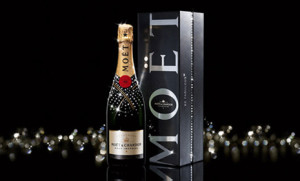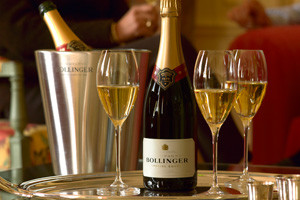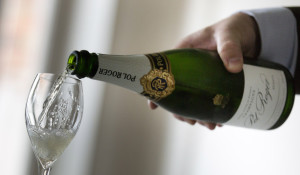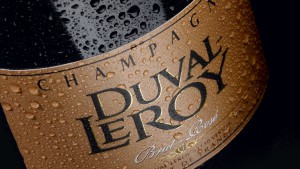“I drink Champagne when I win, to celebrate… And I drink Champagne when I lose, to console myself.” -Napoleon
As the quote tells us, one of the greatest generals of our history was very enthusiastic about this sparkling wine. Not to mention Winston Churchill and Otto von Bismarck. Perhaps not by mere chance. Only a few sparkling wines exist in the world with such elegance and taste.
[CustomTables]
Why is it so attractive for men? And why is it even more attractive for women, according to some studies? Because of the gentle bubbles? Or the natty bottle? Or the name, the history and the prestige? Traditionally the beverage was served on charity auction buffets.
This may attach a bourgeois sense to the sparkling wine, even if many actresses and other performers are famous for their excessive consumption of this miracle full with bubbles! Does it really express some kind of status, class, elegance or taste? Anyway, a good champagne is an indispensable item for a great celebration or a fancy party! Let’s have a short insight in the story of this magnificent drink:
“ Champagne is reserved only for the privileged ”
Champagne is the general term used for wine produced in the Champagne region of France. Other regions are not allowed to use this word for their products, they have to use the term „sparkling wine”, „Champagne” is reserved only for the privileged. The Champagne region consists of five distinct parts: Montagne de Reims (best known for Pinot Noir ), Vallée de la Marne (the home of Pinot Noir and Pinot Meunier), Côte des Blanc (the place for great Chardonnays), Aube and Côte de Sézanne (these two are less famous).
Champagne is said to be invented by a monk called Dom Pérignon in the 17th century, but he wasn’t the first fellow to make sparkling wine. Christopher Merret, an English scientist discovered secondary fermentation and applied the method in a bottle. This is due to the addition of sugar and yeast, which transform into bubbles of carbon dioxide. This is followed by riddling, disgorging, dosage and corking.
Although the first Champagnes were very sweet, the fashion dictates a reduction of sugar level. Real experts claim that only a dry champagne (brut) is a real Champagne, and this may be true also when it comes to wine. Some producers swear by Non Dosage or Brut Zero Champagnes, which contain no sugar at all.
In Champagne the classification system (Échelle des crus) rest on the villages, not on the vineyards (as in Burgundy) or on the wine estates (as in Bordeaux). 17 villages of the region’s 319 villages are rated as „Grand cru” and 43 villages are labelled as „Premier cru”. The rest has no classification, even if some might produce really good wine.
Just to mention a few of the great producers: Bollinger, Deutz, Dom Pérignon, Louis Roederer, Duval-Leroy, Pierre Gimonnet, Alfred Gratien, René Geoffroy, Salon, Cédric Bouchard, Krug, Pierre Moncuit, Marc Hébrart, Bruno Paillard, Pol Roger, Camille Savès and Vilmart.
In the next listing we will introduce 6 of these talented producers by setting up a reverse ranking:
6. Moët & Chandon

Moët & Chandon is a French fine winery and co-owner of the luxury goods company LVMH Moët Hennessy Louis Vuitton SE. The house was established in 1743 by Claude Moët, and today it owns 1,150 hectares (2,800 acres) of vineyards.
The annual production is around 28.000.000 bottles of champagne. People like Napoleon and the Duke of Wellington are associated with this beverage, just to mention a few. Even Queen Elizabeth likes to relax and chill with a bottle of Moët.
In 2006, Moët et Chandon released “Be Fabulous“, a very limited bottling of its champagne with elegant Swarowski crystals, expressing the elegance of Moët et Chandon. The Champagne inspired many great artists as Snoop Dogg (Drop It Like It’s Hot), Queen (Killer Queen), The Notorious B.I.G. (Everyday Struggle), Craig David (7 days), not to mention Richard Staruss’s opera, Arabella.
5. Bollinger

Bollinger is considered one of the „Great” Champagne houses producing sparkling wine in the Champagne region. It was founded by Jacques Bollinger and Paul Renaudin in 1829.
„I drink it when I’m happy and when I’m sad. Sometimes I drink it when I’m alone. When I have company I consider it obligatory. I trifle with it if I’m not hungry and drink it when I am. Otherwise, I never touch it—unless I’m thirsty”, said Lily Bollinger -the wife of Jacques Bollinger-, who expanded the house’s production through the purchase of more vineyards.
Bollinger has a reputation for Pinot Noir dominated, barrel-fermented champagnes with power, body and depth which have the ability to age for many years. The most famous ones are “Vieille Vignes Françaises” and „Grand Année”. Bollinger is also famous for appearing in 11 different James Bond films and even featuring in the original books. Bollinger trustworthily characterizes the smooth, cool elegance of the top agent.
4. Dom Perignon
According to the legend, Dom Perignon was a famous monk and cellar master at the Benedictine abbey in Hautvillers, who invented sparkling wine by making an early variation of Champagne.
“ Astonishingly creamy and smooth ”
Even though this might not be true, he was certainly one who made a lot of improvements to the process, as producing clear white wines from black grapes, blending, balancing the elements, sugar retaining and mastering the timing of bottling.
The Champagne House uses Chardonnay and Pinot Noir in equal proportions, so the balance is perfect, without the domination of any variety. The final proportion changes every vintage.
Dom Pérignon is astonishingly creamy and smooth while it is young, taking up beautifully toasty aromas and unequalled elegance with aging. The word Plenitude expresses the method of leaving the Champagne in contact with it’s lees (late-release).
3. Pol Roger

Pol Roger is one of the smallest Champagne houses in the region with 87 ha of vineyards in Epernay, producing around 110000 cases of Champagne, but it maintains a good relation with the British Aristocracy. Pol Roger was never about quantity.
Much rather, they want to produce only top quality champagne. They are renowned for a light gold color, a winey, gentle and fruitful aroma. The house was established in 1849. Their portfolio consists of a wide variety: non-vintage cuvées, the Pure Brut (no added sugar), Brut Réserve and Rich (sweet), Blanc de Blancs and Rosé Vintage.
Pol Roger’s top cuvée was created in 1975 and named after Sir Winston Churchill. According to the legend, the great leader drank 42000 bottles of Champagne during his lifetime. He was always very loyal to the family and even named one of his prize winning race horses “Pol Roger”. Pol Roger NV was the official Champagne of the Royal Wedding of Prince William and Kate Middleton in 2011.
2. Krug

We will only make a vintage when we believe that there is enough quality,’ Krug said. Similarly to Pol Roger, Krug is not about quantity but quality.
Krug was founded in 1843 by Johann Joseph Krug, who succeeded to create exceptional, inspiring champagne for passionate drinkers. It is based in Reims, the main city of the Champagne region. Today the house is the part of LVMH Moet Henessy’s portfolio, alongside Moet & Chandon, Veuve Clicquot, Chateau d’Yquem and Ruinart.
Despite this fact the Krug family has still a big influence in all the important decisions of the house. Krug is characterized by toasted, grilled notes on the nose, which is due to the ageing sur lies. On the palate one can discover notes of fresh fruit (citrus and grapefruit).
The majority of Krug wines do not undergo malolactic fermentation. Most of it’s wines are dry (under 6,5 g/l residual sugar). Nazi leaders visited the house during World War Two, but they were swindled with lower quality champagnes.
1. Duval Leroy Champagne

The house was founded in 1859 by Jules Duval and Edouard Leroy. It is based in Vertus, a village in the Côte des Blancs region. It produces vintage and non-vintage cuvées as well as organic wines. Carol DUVAL-LEROY is the actual leader of the house since 1991.
There are only a few 100% family-owned Champagne firms left in the region, Duval Leroy is one of them, moreover it is ranked in the 15 top Champagne houses. Chardonnay is the main variety, which is growed on Grand Cru and Premier Cru, but they also have some Pinot Noir in Montagne de Reims.
Since 1991, the early death of Jean Charles Duval, the company has been run by his widow, Carol Duval-Leroy, who was the first woman ever to be nominated chairman of the Association Viticole Champenoise (AVC), the champagne region’s winemakers association.
Recently, Duval-Leroy has made the switch to vegan Champagne. This means that they allow the Champagne to ‘clarify’ naturally, by leaving it for around three months longer than is typical in vats and barrel thus allowing a natural settling process. The house does not need any additional fining agents as gelatin or egg whites. The other speciality of the house is longer ageing which ensures a finer mousse and a natural richness.
I could just encourage everyone to enjoy this wonderfully elegant and slick beverage, and to celebrate the richness of the noble Champagne region. Let your champagne glasses be filled up and let your fantasy blow far away your mind! And do not miss our next article about the Top 6 European Champagne Brands!
